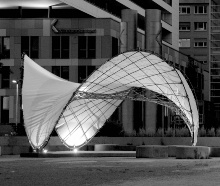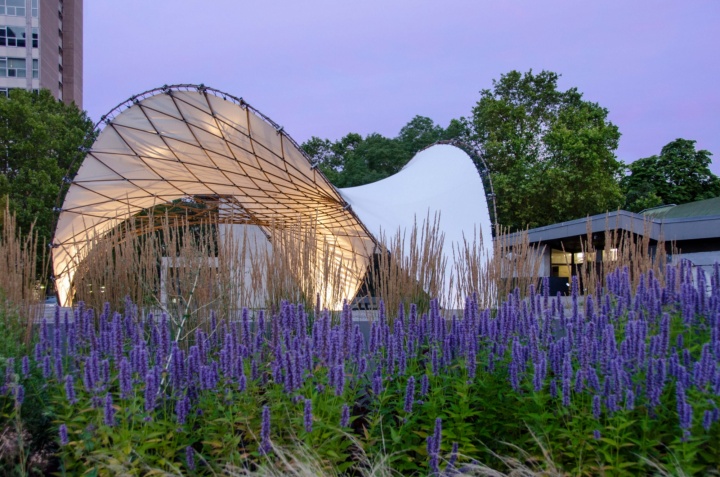Chitin is the main component of insect carapaces and ensures that they are both stable and flexible. The Chitinfluid research project, funded by the Carl Zeiss Foundation, focuses on the use of chitin in construction and aims to process chitin and its derivatives into sustainable materials. In a hybrid symposium under the auspices of Prof. Sabine Laschat from the University of Stuttgart, the project team discussed the current state of research and presented initial achievements. The external project partners from various countries were also present for the first time.
The interdisciplinary project team, consisting of seven researchers from the University of Stuttgart and their 15 doctoral students, takes a holistic view of the process chain, beginning with the raw material over processing to its ultimate use as a construction material. The research groups of Prof. Frank Giesselmann and Prof. Thomas Sottmann at the Institute of Physical Chemistry (IPC) presented their findings on the production of complex fluids, which form suspensions in water that remain stable for multiple weeks.
PhD students in the research group of Prof. Sabine Laschat at the Institute of Organic Chemistry (IOC) work on the use of chitin in 3D printing. They were able to present samples of solid materials, which are formed in a multi-step process on the basis of chitin. The materials offer mechanical stability as well as the desired low densities. As part of this work, particularly suitable source materials in nature were identified. Details on the biosynthesis of chitin were presented by the research group of Prof. Ingrid Weiss of the Institute of Biomaterials and Biomolecular Systems (IBBS).
In cooperation with Thomas Hahn and Susanne Zibek of the Fraunhofer Institute for Interfacial Engineering and Biotechnology (IGB), the research group of Dr. Linus Stegbauer presented a method for extracting chitin from the skins of pupae of the black soldier fly.
From the raw material to the construction industry
The research group of Jun. Prof. Hanaa Dahy presented opportunities for chitin-based materials in architecture and the construction industry. Currently, they are working on producing a catalogue of construction materials as well as characterising different materials on a laboratory scale. During the summer, the BioMat group already built and presented the LightPRO Shell, a lightweight construction consisting of a bending-active cross-beamed shell construction made from natural fiber-based biocomposite profiles, which showcases the opportunities for biobased materials.
Complementary external expertise
Three of the external cooperation partners also presented their current research results relating to the production and use of bio-based raw materials. Prof. Steve Weiner of the Weizmann Institute of Science in Rehovot (Israel) presented his fascinating search for similarities in the biomineralization of different organism on the basis of two-million-year old fossils and recent, high-resolution electron microscopic studies. These studies suggest that biomineralization of hydroxylapatite and other minerals containing calcium in snails, molluscs and other crustaceans takes place through pre-organisation in cellular compartments (so-called vesicles). Chitin seems to play an important role in the structural formation of nacre, for example.
Prof. Jan Lagerwall of the Department for Experimental Soft Matter Physics at the Université du Luxembourg presented an elaborate model of fractionation, which allows for the efficient separation of cellulose nanocrystals according to their size/length or their phase behavior/gel formation.
In an application-oriented talk, Dr.-Ing. Gerrit Hohenhoff of the Laserzentrum Hannover (LZH) presented different methods for additive manufacturing, whereby biopolymers can be transformed into 3D objects.
Through these presentations, the symposium was a place of lively exchange among the principal investigators, junior researchers and external partners. The talks of the individual research groups contributed to the communication between and the cooperation of the various disciplines within the project towards the goal of sustainable construction materials on the basis of chitin.





